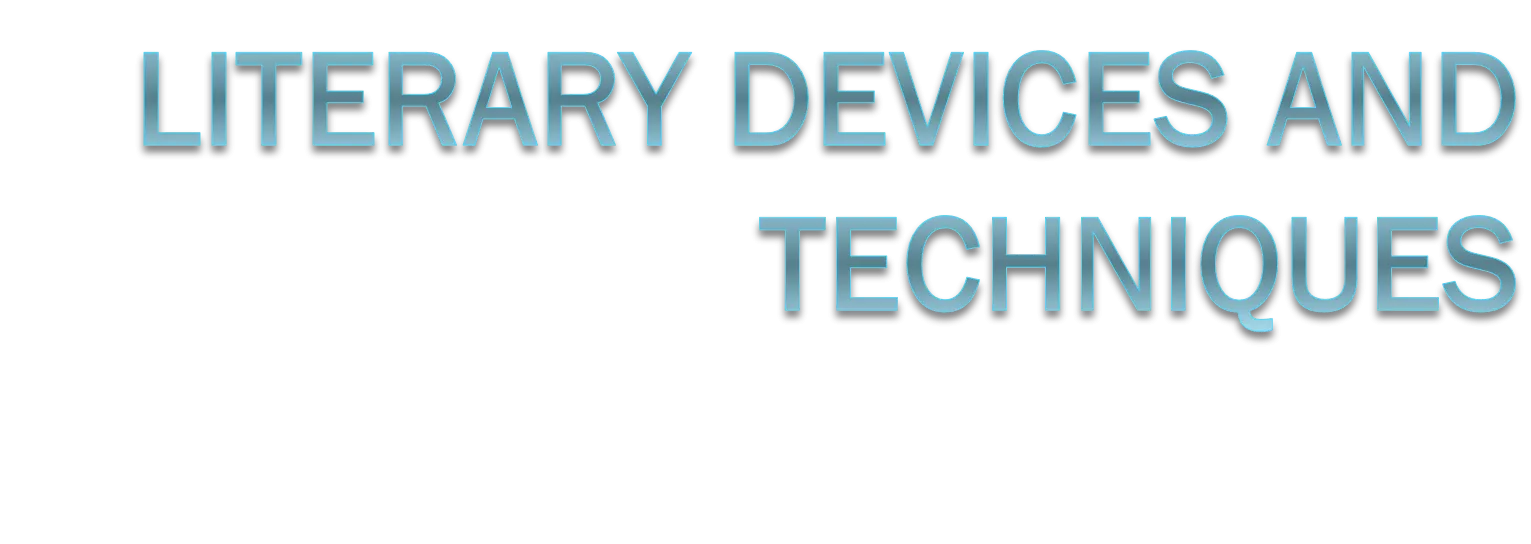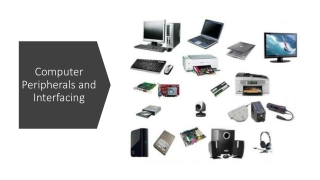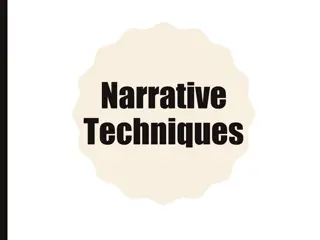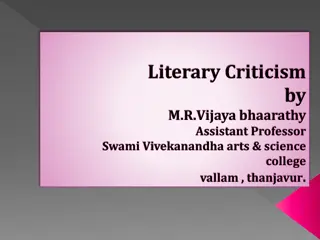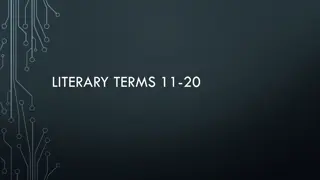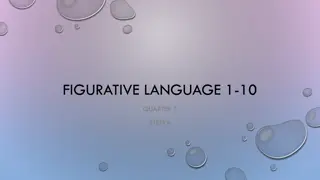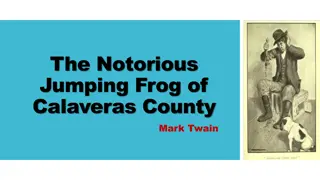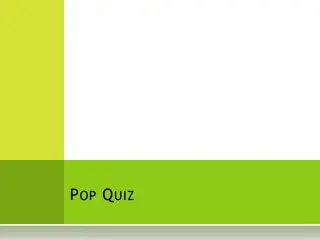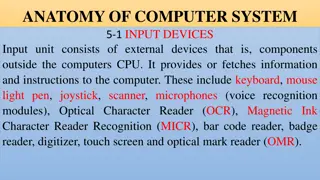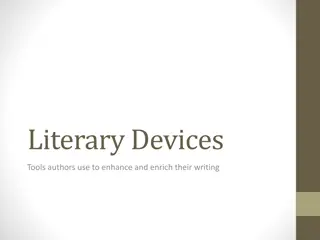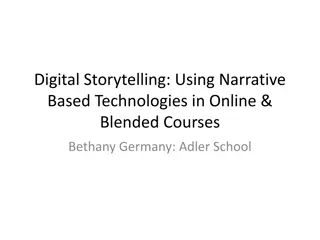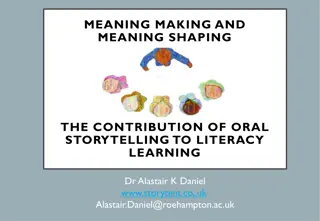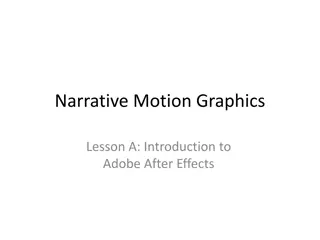Literary Devices and Techniques in Storytelling
Delve into the world of storytelling with an examination of key literary devices and techniques such as plot, exposition, rising action, climax, falling action, and denouement. Understand the significance of similes, metaphors, personification, and other tools that bring narratives to life.
Download Presentation

Please find below an Image/Link to download the presentation.
The content on the website is provided AS IS for your information and personal use only. It may not be sold, licensed, or shared on other websites without obtaining consent from the author.If you encounter any issues during the download, it is possible that the publisher has removed the file from their server.
You are allowed to download the files provided on this website for personal or commercial use, subject to the condition that they are used lawfully. All files are the property of their respective owners.
The content on the website is provided AS IS for your information and personal use only. It may not be sold, licensed, or shared on other websites without obtaining consent from the author.
E N D
Presentation Transcript
LITERARY DEVICES AND LITERARY DEVICES AND TECHNIQUES TECHNIQUES Definitions for Review Table
plot exposition rising action climax falling action denouement simile metaphor analogy personification onomatopoeia dead metaphor implied metaphor mixed metaphor extended metaphor
PLOT - Series of events that make up a story. EXPOSITION - Background information to a story; introduces characters and setting
PLOT - Series of events that make up a story. EXPOSITION - Background information to a story; introduces characters and setting RISING ACTION - The events of a plot that lead up to the climax; builds suspense
PLOT - Series of events that make up a story. EXPOSITION - Background information to a story; introduces characters and setting RISING ACTION - The events of a plot that lead up to the climax; builds suspense CLIMAX - The highest, most intense point of conflict in a story
PLOT - Series of events that make up a story. EXPOSITION - Background information to a story; introduces characters and setting RISING ACTION - The events of a plot that lead up to the climax; builds suspense CLIMAX - The highest, most intense point of conflict in a story FALLING ACTION - The events of a dramatic or narrative plot following the conflict
PLOT - Series of events that make up a story. EXPOSITION - Background information to a story; introduces characters and setting RISING ACTION - The events of a plot that lead up to the climax; builds suspense CLIMAX - The highest, most intense point of conflict in a story FALLING ACTION - The events of a dramatic or narrative plot following the conflict DENOUEMENT - Resolution of the plot
SIMILE - Comparing two unlike things using like or as
SIMILE - Comparing two unlike things using like or as METAPHOR - Comparing two unlike things
SIMILE - Comparing two unlike things using like or as METAPHOR - Comparing two unlike things ANALOGY - Resembling relations; comparing groups to show relationships
SIMILE - Comparing two unlike things using like or as METAPHOR - Comparing two unlike things ANALOGY - Resembling relations; comparing groups to show relationships PERSONIFICATION - Giving human qualities or characteristics to nonliving things
SIMILE - Comparing two unlike things using like or as METAPHOR - Comparing two unlike things ANALOGY - Resembling relations; comparing groups to show relationships PERSONIFICATION - Giving human qualities or characteristics to nonliving things ONOMOTOPOEIA - Use of a word whose sound often imitates its meaning
DEAD METAPHOR - An overused metaphor that has gained a new meaning
DEAD METAPHOR - An overused metaphor that has gained a new meaning IMPLIED METAPHOR - A more subtle use of a metaphor
DEAD METAPHOR - An overused metaphor that has gained a new meaning IMPLIED METAPHOR - A more subtle use of a metaphor MIXED METAPHOR - Two or more metaphors used together that appear illogical
DEAD METAPHOR - An overused metaphor that has gained a new meaning IMPLIED METAPHOR - A more subtle use of a metaphor MIXED METAPHOR - Two or more metaphors used together that appear illogical EXTENDED METAPHOR - Metaphor that continues throughout the entire text
anachronism allusion protagonist antagonist foil flat character round character static character dynamic character symbolism imagery flashback foreshadow theme tone mood
ANACHRONISM - Something that is not in its correct historical time period
ANACHRONISM - Something that is not in its correct historical time period ALLUSION - An implied or direct reference to another text, person, thing, or event
ANACHRONISM - Something that is not in its correct historical time period ALLUSION - An implied or direct reference to another text, person, thing, or event PROTAGONIST - Main character of a story
ANACHRONISM - Something that is not in its correct historical time period ALLUSION - An implied or direct reference to another text, person, thing, or event PROTAGONIST - Main character of a story ANTAGONIST - The character who opposes the main character
ANACHRONISM - Something that is not in its correct historical time period ALLUSION - An implied or direct reference to another text, person, thing, or event PROTAGONIST - Main character of a story ANTAGONIST - The character who opposes the main character FOIL - Character who contrasts protagonist to enhance qualities
FLAT CHARACTER - A one-dimensional character
FLAT CHARACTER - A one-dimensional character ROUND CHARACTER - A fully developed character
FLAT CHARACTER - A one-dimensional character ROUND CHARACTER - A fully developed character STATIC CHARACTER - A character that stays the same throughout the story
FLAT CHARACTER - A one- dimensional character ROUND CHARACTER - A fully developed character STATIC CHARACTER - A character who stays the same throughout the story DYNAMIC CHARACTER Character who changes permanently throughout the story
SYMBOLISM - Representations of things to others by means of symbols
SYMBOLISM - Representations of things to others by means of symbols IMAGERY - Descriptive text; creating mental images for the reader
SYMBOLISM - Representations of things to others by means of symbols IMAGERY - Descriptive text; creating mental images for the reader FLASHBACK - When the text refers back to previous events
SYMBOLISM - Representations of things to others by means of symbols IMAGERY - Descriptive text; creating mental images for the reader FLASHBACK - When the text refers back to previous events FORESHADOW - To give a hint to what will happen later in the text
THEME - Authors message to the reader; underlying meaning of a story
THEME - Authors message to the reader; underlying meaning of a story TONE - Attitude of the writer toward a subject
THEME - Authors message to the reader; underlying meaning of a story TONE - Attitude of the writer toward a subject MOOD - Feeling the reader gets from a story
allegory internal conflict external conflict denotation connotation parallelism alliteration parody satire irony situational irony dramatic irony verbal irony hyperbole understatement
ALLEGORY - Symbolic representations of abstract or spiritual ideas
ALLEGORY - Symbolic representations of abstract or spiritual ideas INTERNAL CONFLICT - Conflict within a character; man vs. self
ALLEGORY - Symbolic representations of abstract or spiritual ideas INTERNAL CONFLICT - Conflict within a character; man vs. self EXTERNAL CONFLICT - Conflict outside of a character; man vs. man, man vs. society, man vs. nature, etc.
ALLEGORY - Symbolic representations of abstract or spiritual ideas INTERNAL CONFLICT - Conflict within a character; man vs. self EXTERNAL CONFLICT - Conflict outside of a character; man vs. man, man vs. society, man vs. nature, etc. DENOTATION - Basic dictionary definition of a word
ALLEGORY - Symbolic representations of abstract or spiritual ideas INTERNAL CONFLICT - Conflict within a character; man vs. self EXTERNAL CONFLICT - Conflict outside of a character; man vs. man, man vs. society, man vs. nature, etc. DENOTATION - Basic dictionary definition of a word CONNOTATION - The implied meaning or attributes given to a word
PARALLELISM - The use of identical phrases, clauses, and structures within a sentence
PARALLELISM - The use of identical phrases, clauses, and structures within a sentence ALLITERATION - Repetition of same sounds at the beginning of words
PARALLELISM - The use of identical phrases, clauses, and structures within a sentence ALLITERATION - Repetition of same sounds at the beginning of words PARODY - Humorous imitations of a piece of text
PARALLELISM - The use of identical phrases, clauses, and structures within a sentence ALLITERATION - Repetition of same sounds at the beginning of words PARODY - Humorous imitations of a piece of text SATIRE - A text that mocks social conventions; ridicules serious situations
IRONY - Contrast between expectations and reality
IRONY - Contrast between expectations and reality SITUATIONAL IRONY - Expecting one thing to happen but something entirely different taking place
IRONY - Contrast between expectations and reality SITUATIONAL IRONY - Expecting one thing to happen but something entirely different taking place DRAMATIC IRONY - Contrast between what the character knows and what the reader knows
IRONY - Contrast between expectations and reality SITUATIONAL IRONY - Expecting one thing to happen but something entirely different taking place DRAMATIC IRONY - Contrast between what the character knows and what the reader knows VERBAL IRONY - When someone says something but means another (often called sarcasm )
HYPERBOLE - Extreme exaggeration UNDERSTATEMENT - Statement less strong or striking than facts would show

 undefined
undefined

